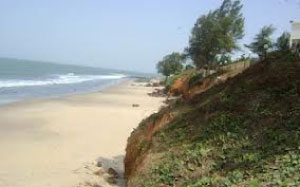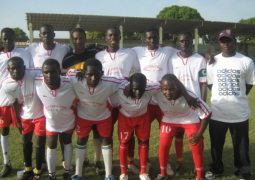
Hello and a warm welcome to another edition of Environment, your weekly column aimed at bringing environmental issues into the limelight.
In today’s edition we bring you a document prepared by Mr. Momodou Jama Suwareh Senior Programme Officer for Coastal and Marine Environment under the National Environment Agency on the impacts of climate change on coastal environment and resources.
It is predicted that if emissions of green house continue unchecked global temperatures will be increased to about one degree centigrade above the present value by 2025 and three degree centigrade before the end of the next century.
The leading consequences of global warming and sea level rise includes coastal flooding erosion, altered distribution of agriculture, abnormal variations in patterns of plant growth, desertification of fragile croplands, population movements and attendant political tensions, loss of natural living resources e.g. fish and shellfish production, alteration of sea boundaries together with its international legal implication amongst others.
The coastal environment is that area between land and sea which forms the limit of coastal influence on the marine environment. It is a zone of varying width which in the landward direction delineates the limit of the continental shelf demarcated by the sheldbreak.
The coastline, perse is the land margin in the back shore zone, while the seaward is the shore; in the Gambia context, it is 81 km open ocean coast and about 200km sheltered coast along the Gambia River. The Gambia’s coastal environment consist not any areas that border the Atlantic Ocean but also those with brackish water environment that border the river Gambia, extending 200km in land.
The Gambia coastal environment comprise of coastal ecosystems and coastal wetland. In the coastal ecosystems are habitats and their assemblages of organisms in addition to any functions of such organisms and processes, while the coastal wetlands are areas of marsh, fen, whether peat land or water natural or artificial permanent or temporal with water that is static or flowing fresh, brackish or salt, including areas of marine water, the depth of which at low tide does not exec six metres just over 19 feet.
The Gambia coastal ecosystem could be classified into estuarine, inter-tidal and oceanic. For the estuarine ecosystem includes coastal terrestrial habitats, mangrove forest, coastal wetlands, seagrass beds, sediments and soft bottom habitats. In this habitat diverse flora and fauna with mostly littoral species are common. Estuarine flora includes rich phytoplankton particularly along salt marshes and mudflats.
Angiosperms particularly white and red mangroves laguncularia racemosa, concarpus erectus. Sea weed and sagrass are also common along estuarine coasts. Estuarine ecosystems through tidal circulation export nutrients and organic materials to outside waters. Estuarine ecosystems provide habitat for a number of commercially or recreationally valuable fish species.
The inter-tidal ecosystem according to the paper are mainly salmarsh habitats and includes shorelines, inter-tidal zones and mangrove swamps and are frequently water logged, turbid and anaerobic. This ecosystem types harbours complex community animals especially invertebrates, numerous species, birds, insects and lizards.
Vegetation in these areas is predominantly mangroves trees, ferns, fringing palms on mud flats. The vegetation act as buffer allowing terrestrial sediments from rivers to settle down and muddy bottom suitable for large number of burrowers. Fish and other filter feeder found shelter in the crannes between roots of vegetation in the inter-tidal/salt marsh ecosystem.
Oceanic ecosystems are habitats that range from continental shelf to deep sea areas and includes rocky shores/hard bottom habitats, pelagic habitats, sea grass beds and upwelling areas.
Important ecological sites
There are nine sites of high ecological importance along the southern part of the Gambia Atlantic coastal area namely camalo corner, oyster creek mangrove swamps, Tanji bird reserve, Brufut woodland, solifor point, Tujereng lagoons, River kakine delta and dua dula to kartong.
Environmental aspect of the coastal environment are elements of the area activities, products or services that can interact with the environment and these includes the different specific types of the areas, settlements, structures, supply installations (water works, electricity) and population.
National responses and ameliorating measures
Clearly large climate change would be disastrous to the Gambia’s environment, economic and social sustenance and therefore the country’s responses to climate change would have to broad and robust. It would have to incorporate strategic policy thrust to promote technology based practices and anticipatory measures that are both preventive, adaptive as well as mitigatory measures in some instances. Some interventions should be micro scale focusing the individual, family and community as well as inter annual and within season climate variability.
Others would be micro and macro level implementable by local authorities and national agencies. Prevention being early warning should invest in reliable early warning equipment.
For your comments, suggestions and contributions, please contact (00220) 6361340/7142236 or Email: bajgambia2011@yahoo.com



